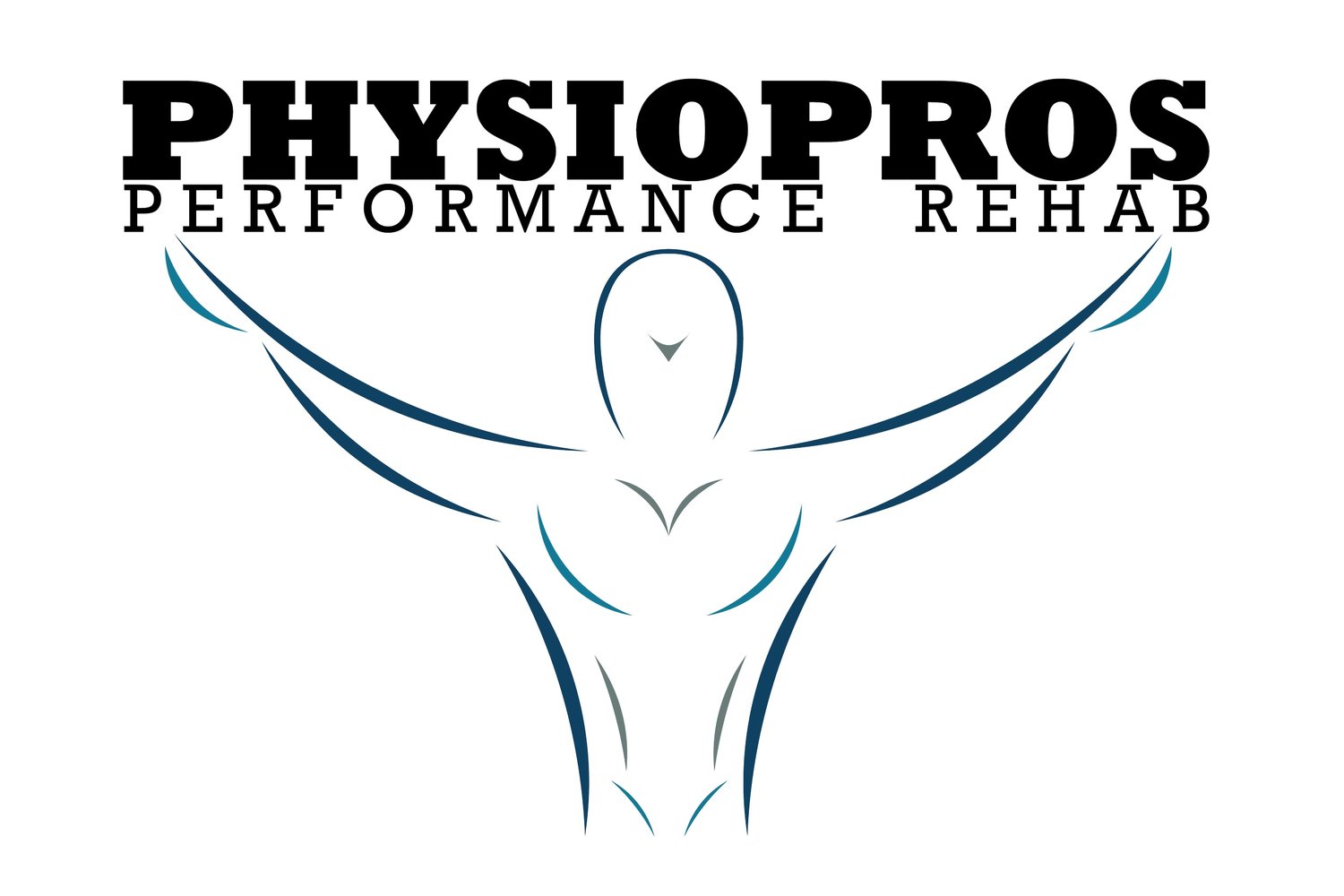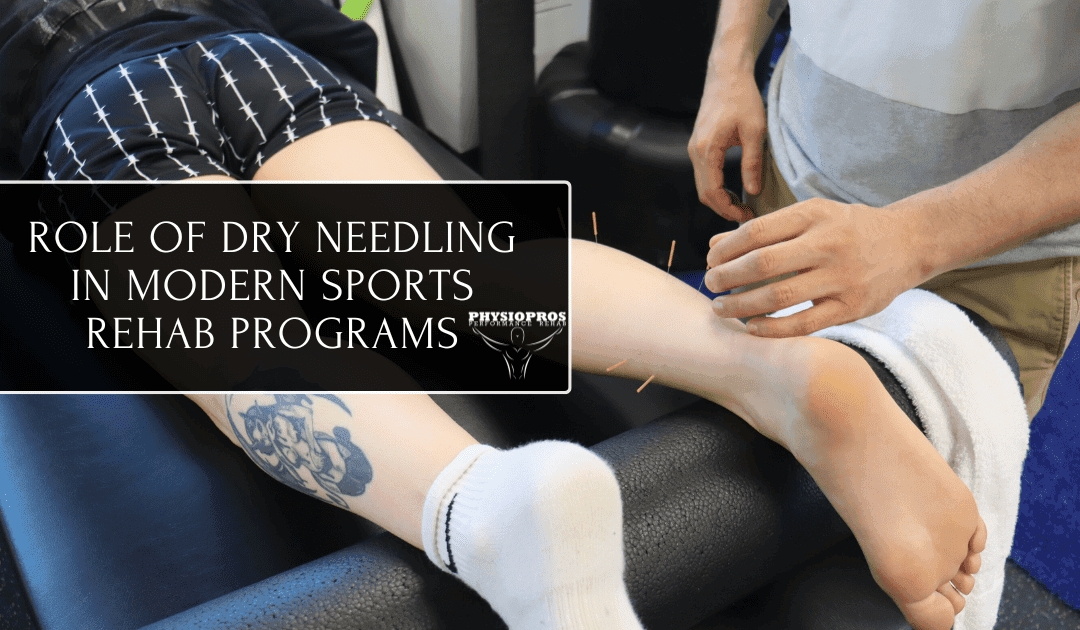The Role of Dry Needling in Modern Sports Rehab Programs
At Physiopros Performance Rehab in Parsippany, NJ, we specialize in helping athletes recover quickly and return to peak performance. One of the most effective treatments we offer is dry needling. This innovative technique targets muscle pain and stiffness, accelerating recovery and improving overall performance. In this blog post, we’ll explore how dry needling works, its benefits, when it’s best used, and how it can be integrated into a sports rehab program.
Audio Version:
What is Dry Needling?
Dry needling is a therapeutic technique used to treat muscle pain and stiffness. It involves inserting thin needles into muscle trigger points—tight knots that form in overworked or injured muscles. Unlike acupuncture, which targets energy pathways, dry needling focuses directly on releasing tension in the muscles and fascia, providing direct relief from pain. Check out all the differences between Dry Needling vs Acupuncture by clicking here: Dry Needling vs Acupuncture Blog Post.
The thin needles used in dry needling are inserted into specific muscle points that are causing discomfort, allowing the muscle to relax, increase blood flow, and promote healing. For athletes who often experience tight muscles or chronic pain due to overuse, dry needling can offer a solution that not only relieves pain but also aids in a quicker recovery time.
When performed by trained therapists, dry needling is a precise, minimally invasive method that provides effective results. Whether it’s treating a specific injury or simply helping an athlete maintain flexibility, dry needling is a versatile tool in sports rehab.
For a deeper dive into everything regarding Dry Needling, click on the following link: Dry Needling Services at Physiopros.
The Science Behind Dry Needling
Dry needling works by targeting muscle trigger points, which are the source of pain and tightness in many injuries. These trigger points develop when muscles become overused, injured, or stressed. Trigger points are often described as “knots” in the muscle, and they can cause referred pain, or pain felt in other parts of the body. For example, a knot in your shoulder could cause pain to radiate down your arm or across your neck.
By inserting fine needles into these trigger points, dry needling helps release muscle tension, reduce pain, and improve muscle function. The needles are inserted at different depths into the muscle depending on the severity of the issue. This process stimulates the muscle and its surrounding tissue, promoting blood flow, reducing inflammation, and helping the muscle heal faster.
In addition to reducing pain, dry needling promotes healing by encouraging the body to produce natural pain-relieving chemicals. When a needle is inserted into a trigger point, it creates a small “microtrauma” to the muscle, which signals the body to increase circulation to the area, remove waste products, and bring in fresh oxygen and nutrients to aid healing. This process speeds up the recovery process, allowing athletes to return to their training or competition with less downtime.
How Dry Needling Benefits Athletes
Dry needling offers several benefits, making it a go-to technique for athletes. Here are the key advantages:
- Faster Recovery: Dry needling promotes blood flow to the injured area, speeding up recovery. By addressing the root cause of muscle pain, athletes can return to their sport faster.
- Improved Flexibility: Dry needling releases tight muscles, which improves the range of motion. This leads to better flexibility, enhancing overall performance.
- Pain Relief: By targeting muscle knots, dry needling provides long-lasting pain relief. This helps athletes recover from strains, overuse injuries, and general discomfort.
- Reduced Inflammation: The increased blood flow from dry needling helps reduce swelling and inflammation in muscles, speeding up the healing process.
- Prevention of Future Injuries: By releasing tight muscles and improving movement, dry needling helps prevent future injuries. This is crucial for athletes who want to stay in the game without dealing with recurring issues.
Dry needling can be a game-changer for athletes facing muscle pain or tightness. Whether you’re dealing with an injury or want to improve flexibility, dry needling plays a vital role in your sports rehab program.
When is Dry Needling Used in Sports Rehab?
This technique is commonly used for muscle-related injuries, especially when tightness or muscle knots are involved. It’s effective for conditions like:
- Muscle Strains: Whether you’ve strained your hamstring, calf, or other muscles, dry needling targets the tightness to speed up recovery.
- Tendonitis: Sports that involve repetitive motions, like tennis or swimming, can lead to tendonitis. Dry needling reduces inflammation and eases pain.
- Chronic Muscle Tightness: Athletes often experience ongoing muscle tightness from long hours of training. Dry needling helps release this tension and restore flexibility.
- Post-Surgery Rehab: After surgery, dry needling helps reduce scar tissue and promotes healing in both muscle and soft tissue.
- Muscle Spasms: Muscle spasms can interfere with training and performance. Dry needling provides quick relief by relaxing the affected muscles.
Dry needling is often integrated with other rehab methods, such as physical therapy, massage, and stretching. This combination ensures that athletes receive the most comprehensive care possible for their recovery.
What to Expect During a Dry Needling Session
See for yourself what you can expect during a Dry Needling session at Physiopros in Parsippany, New Jersey: What To Expect Video.
Dry Needling vs. Other Rehab Methods
There are several rehab methods available, but dry needling stands out for its precision and effectiveness in targeting muscle pain and tension. Let’s compare it to other common methods:
- Massage Therapy: While massage is great for general relaxation, it doesn’t always reach deep muscle layers. Dry needling targets specific trigger points, offering more focused relief for chronic muscle pain.
- Stretching and Foam Rolling: Both stretching and foam rolling improve flexibility but can’t always address deeper muscle issues. Dry needling, on the other hand, directly releases tight muscle knots that stretching or foam rolling can’t reach.
- Physical Therapy: Physical therapy helps restore strength and mobility. Dry needling complements physical therapy by reducing pain and improving flexibility, making it easier to perform therapy exercises.
- Hot/Cold Therapy: Heat and ice are often used to manage pain and inflammation, but they don’t treat the underlying cause. Dry needling goes straight to the source—muscle tightness and trigger points.
- Electrical Stimulation (TENS): Electrical stimulation helps relieve pain through electrical impulses. Dry needling targets muscle knots directly, offering longer-lasting results and improved muscle function.
At Physiopros Performance Rehab, we use a blend of these methods to offer a well-rounded, personalized treatment plan. We understand that every athlete’s recovery is unique, and we tailor our approach to meet your specific needs.
In Conclusion
Dry needling is an incredibly effective tool in modern sports rehab programs, helping athletes recover from injuries, improve flexibility, and reduce pain. Its ability to target specific muscle trigger points offers precise relief, making it an essential part of a comprehensive rehab plan. At Physiopros Performance Rehab in Parsippany, NJ, we integrate dry needling with other therapies like massage, stretching, and physical therapy to provide a well-rounded approach that accelerates recovery and supports long-term performance.
If you’re dealing with muscle tightness, pain, or a sports-related injury, dry needling might be the solution you’ve been looking for. Our experienced team will work with you to develop a personalized treatment plan that helps you get back to your sport stronger, faster, and more resilient. Don’t let pain hold you back—reach out to us at Physiopros Performance Rehab and take the next step in your recovery journey! You can fill out our contact form here: Physiopros Contact Form or give us a call at (973) 265-8621.
FAQ
- Is dry needling painful?
Most athletes report feeling minimal discomfort during dry needling. You may experience a mild “twitch” or slight soreness when the needle is inserted into the muscle, but it’s typically brief. After the session, some muscle soreness is normal, but it usually fades within a day. - How long does it take to see results from dry needling?
Many athletes experience immediate relief after just one session, but depending on the severity of the condition, multiple sessions may be required to achieve lasting results. Your therapist will guide you on the ideal number of treatments. - Can dry needling be used for all types of sports injuries?
Dry needling is most effective for muscle-related injuries, such as strains, tendonitis, and muscle spasms. While it may not be suitable for all injuries, it’s a great option for athletes dealing with muscle pain and tightness. Your therapist will evaluate your condition to determine if it’s the right treatment for you. - Is dry needling covered by insurance?
Coverage for dry needling can vary depending on your insurance provider. Many insurance plans that cover physical therapy may also cover dry needling. It’s a good idea to check with your insurance provider or speak to our team to confirm your coverage. - Can I continue my workouts after a dry needling session?
It’s generally okay to resume light activity after dry needling, but you may want to avoid high-intensity workouts immediately afterward, especially if the treated muscles are sore. Your therapist will give you personalized advice on how to manage post-treatment activities.
If you have more questions or want to explore how dry needling can fit into your recovery plan, don’t hesitate to reach out to us!

